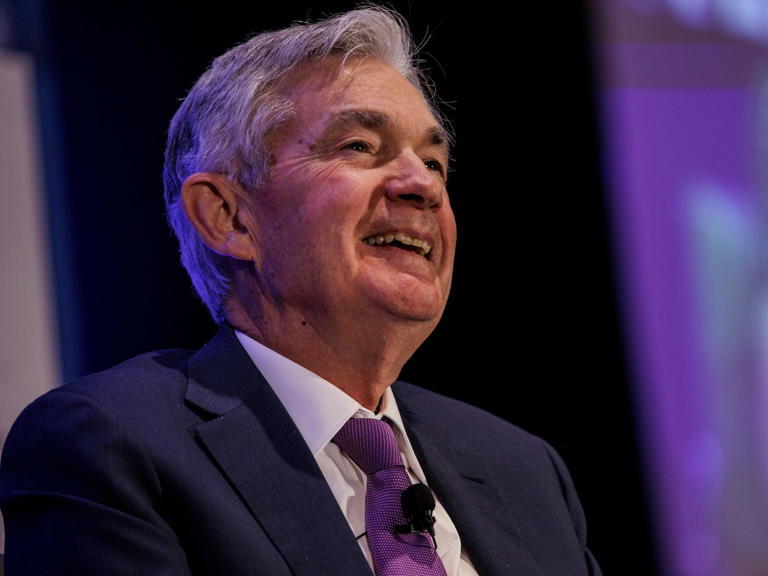Recent economic data from the United States indicates a promising outlook, suggesting a soft landing as both the labor market and inflation show signs of gradual cooling. This scenario is beneficial for workers and the broader economy, indicating lower price growth without triggering a recession. Here’s a closer look at the current state of the US economy, the concept of a soft landing, and what it means for various stakeholders.
Defining a Soft Landing
A soft landing is an ideal economic outcome where inflation decreases without causing significant disruptions such as a sharp rise in unemployment or negative GDP growth. Economic policy advisor Paulina Restrepo-Echavarria from the St. Louis Federal Reserve defines a soft landing as a situation where interest rates are increased to control inflation, but this does not lead to a drastic increase in unemployment or negative GDP growth. Joseph Briggs, an economist at Goldman Sachs, believes that the economic rebalancing needed to achieve a soft landing has largely been accomplished. He anticipates a return to a more normal economic environment with growth at or slightly above potential and sequential inflation near 2% in the coming months or quarters.
Benefits of a Soft Landing
Achieving a soft landing can have significant positive implications for American workers and the broader economy. Nick Bunker, economic research director for North America at the Indeed Hiring Lab, points out that the difference between a soft landing and a more turbulent economic slowdown can be substantial in terms of job security. Avoiding a recession while successfully reducing inflation would mean fewer economic hardships typically associated with severe slowdowns. Joseph Briggs notes that achieving a soft landing would benefit everyone, helping to avoid the economic hardships that often accompany a significant economic downturn.
Labor Market Trends
Despite efforts by the Federal Reserve to cool down the economy through interest rate hikes, the labor market has remained robust. In April, 175,000 jobs were added, a slowdown from March’s gain of 315,000 but still a positive indicator of job growth. Data from the Bureau of Labor Statistics shows a continued downward trend in job openings, suggesting that businesses are slowing their hiring plans. The number of job openings per unemployed person has been moving downward throughout 2024, which indicates that the labor market is moving towards a more balanced state.
Nick Bunker highlighted that over the past two years, the labor market has cooled off in a relatively painless way. There are fewer job switches, layoffs remain low, and the unemployment rate has been below 4% for over two years. However, Bunker cautions that if inflation reduction stalls, any further cooling in the labor market could lead to higher unemployment.
Inflation and GDP Growth
Inflation has shown signs of moderation, which is a positive development. The year-over-year increase in the Personal Consumption Expenditures (PCE) price index, a key measure of inflation, was 2.7% in April. This represents a significant moderation compared to the sharp inflation increases seen in 2022. Furthermore, GDP growth has remained positive, with the last negative change in US real GDP occurring in the second quarter of 2022. This is a strong indicator that the US is avoiding a recession.
Another important indicator, the ISM manufacturing index, which tracks activity in US factories, fell more than expected in May. UBS noted in a report that the decline in the index, particularly in the new orders and production components, aligns with expectations of a gradual slowdown in US economic growth. This gradual slowdown is expected to position the Federal Reserve to potentially start easing policy later this year amid falling inflation.
Current Economic Environment
David Kelly, chief global strategist at J.P. Morgan Asset Management, believes the US has already achieved a soft landing. He defines a soft landing as a situation where the unemployment rate is at or below its full-employment level and the inflation rate is gradually coming down to an acceptable level. Kelly notes that the unemployment rate has consistently been at or below 4% for 30 consecutive months, and inflation has been gradually decreasing. According to Kelly, the economy has been in a soft landing phase for some time, continuing to grow while cooling down gradually.
Jason Draho, head of Asset Allocation Americas at UBS Global Wealth Management, notes that while some forecasters still consider the possibility of a recession, the consensus among investors is that growth is slowing but not collapsing. Inflation remains stubborn, but its trend is downward, and the Federal Reserve is expected to maintain current interest rates with the potential for rate cuts later in the year. Draho describes the current economic situation as a “fairly comfortable soft landing with occasional turbulence.”
Conclusion
The US economy appears to be on a positive trajectory toward a soft landing, characterized by a cooling labor market and moderated inflation without slipping into a recession. This scenario is promising for workers and the broader economy, suggesting stability and sustained growth. However, it is important to recognize that economic conditions remain challenging for many, with the benefits of the current economic environment not evenly distributed across all households.
In summary, while the US economy is navigating through a complex landscape of cooling inflation and a stabilizing labor market, the signs point to a successful soft landing. The continued moderation in inflation, positive GDP growth, and a balanced labor market suggest that the US is on a path to sustained economic stability without the severe disruptions of a recession. This outlook is encouraging for both workers and the broader economy, providing a foundation for future growth and prosperity.
